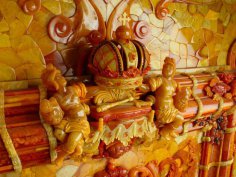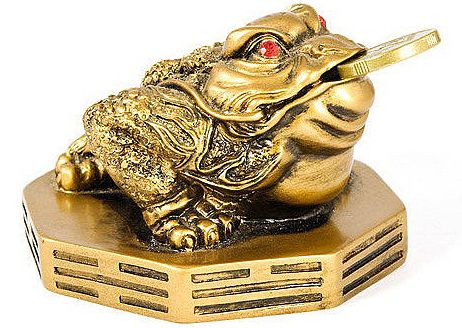
One of history's greatest mysteries—the disappearance of the famous Amber Room—is linked to the name of the Nazi scientist Alfred Rohde. In the 1930s and 1940s, he was quite well known in Germany. As a scholar and curator of the art collections at the Royal Castle of Königsberg, Rohde assembled a unique collection of amber works. It included jewelry, paintings, crucifixes, and sculpted portraits. It was Rohde who insisted that the Amber Room be removed from Soviet territory during the war.
When Soviet troops entered Königsberg, all the halls of the castle museum were empty—all the exhibits so carefully preserved by Alfred Rohde were gone. For over 70 years, the mystery of the disappearance of the world's largest amber collection has captivated researchers and scientists worldwide.
Alfred Rohde served for many years at the Königsberg Royal Castle. He became famous as the custodian of an unprecedented collection of amber, and the disappearance of it and the entire collection immortalized his name.
The German scholar and art historian Alfred Rohde wrote books about artists, described the exhibits of the Royal Museum, and created an unprecedented museum of world art. Hitler envisioned the museum's exhibits to be comprised of works of art confiscated and removed from occupied countries. The cities of Krakow and Königsberg became transit points for the temporary storage of these valuables. Alfred Rohde oversaw the reception, labeling, and distribution of these valuables. The vaults of Königsberg Castle housed valuables taken from Russia, Belarus, and Ukraine.
Rode used all his influence to ensure that the Amber Room was brought to his museum in December 1941. The Amber Room was assembled in one of the halls of the Royal Castle, but not completely. The room allocated for it was smaller than the one in the St. Petersburg palace, and some panels were kept in storage. The Royal Castle was bombed several times by British aircraft, and in 1944, it suffered a major fire. Rode reported to command that the Amber Room had been partially damaged in the fire. To protect the valuable exhibit, the Amber Room was urgently dismantled, crated, and placed in various parts of the large castle. It is believed that the crates containing the Amber Room were lowered into the “Anna” shaft, the entrance to which was sealed by an explosion. To this day, the shaft's tunnels have never been explored.
Mysterious coincidences and mysteries surrounding the unique collection of amber artifacts began in April 1945. It turned out that no archive contained any documents related to plans for the relocation of these valuables. Although reports from Alfred Rohde's numerous missions have survived, not a single one mentions searching for a place to hide the valuables in the event of the city's fall. Perhaps due to the rapid advance of Soviet troops, the removal of the collections became impossible. Rohde himself did not leave Königsberg after the arrival of Soviet troops; he sent his family to Germany in advance, but he himself remained behind. Perhaps something held him back, or perhaps he stayed behind to guard the hidden treasures?
No one showed any interest in Rohde himself. Immediately after the city's capture, the Royal Castle was searched. In the first days after Königsberg's surrender to the Germans, the ruined city was plundered. According to those who witnessed the events, the search of the Royal Castle was not carried out by museum specialists, but by salvage teams who removed all the valuables they found—from tools, machine tools, and art objects—and they were indifferent. Alfred Rohde continued to keep the secret of the hidden collections. Time passed. Mysterious deaths began to claim people connected to the missing art objects from the Königsberg palace.
In December 1945, the SMERSH investigative department received a report of the missing couple. A neighbor claimed that three men had visited them and taken Rode, presumably to the hospital. The hospital already had a death certificate and even an extract indicating the burial site in the Louise Cemetery. For several hours, ten German prisoners of war dug into the frozen soil of the Rode grave, but it turned out to be a fake. Thus, someone had hastily eliminated a dangerous witness who knew the location of the Royal Castle's collections.
It is known that for several years after Königsberg's liberation from the Nazis, a secret organization called “Werwolf” operated in the city. One of its main tasks was to continue the operation to retrieve valuables stolen from many European countries. There are reports that the scientist was killed by “Werwolf” fighters, and that the operation was led by SS-Obersturmbannführer Gustav Georg Wiest. He was tasked with removing the Amber Room from Soviet-occupied territory. Many years later, the officer's son was found living in West Germany. According to him, his father died suddenly under strange circumstances immediately after completing a mission in East Prussia.
The mysterious death of the manager and housekeeper of the estate of former East Prussian Gauleiter Erich Koch is also connected to the missing valuables from Königsberg. They knew that underground work was being carried out on the estate in late 1944 and that valuables were possibly hidden there. The prisoners of war involved in the construction were executed. The entrance to the underground passages was later found. It turned out that the underground passages from the estate were connected to the Königsberg dungeons.
According to a diving specialist, there's an entire city beneath Königsberg. There's even an aircraft factory there, mothballed by the Nazis. Several attempts have been made to pump water out of the city's underground passages, but to no avail. Research has shown that Königsberg's underground passages are connected to the Baltic Sea. Several years ago, two amateur explorers managed to find an artificial grotto on the coast. The entrance was mined. The men tried to find a specialist who could disarm the entrance. But both men soon died: one fell from a fifth-floor balcony, and the other went missing.
The string of mysterious deaths linked to the search for the Amber Room continued. In November 1988, German scientist Georg Stein, an active researcher into the mystery of the Amber Room's disappearance, wrote to a friend that he had discovered the Amber Room. Soon after, the scientist's body, stabbed to death, was found near Hamburg in the ruins of an ancient castle. The mystery of the Amber Room remained unsolved, but the scientist's archive survived. It mentions the “Olga” testing ground and “Erich Koch's valuables,” which most likely included the Amber Room. The documents indicate that all these treasures departed East Prussia in January 1945 on the warship “Emden.”
Georg Stein traced the valuables to Weimar. He had documents confirming numerous trips by Swiss Red Cross trucks between Weimar and the Olga training ground after the city was captured by Soviet troops. Witnesses were found who saw enormous boxes in the back of the trucks. This operation involved not only Werwolf personnel but also Western allies, as well as the brother of the Swiss president, Benoît Musy, who died under unknown circumstances shortly after the operation.
Another mysterious moment related to the Olga Proving Ground. On April 19, 1945, Eisenhower inspected the Olga Proving Ground. He visited a prisoner-of-war camp and the art storage facility located there. It is unknown whether any valuables were there at the time. When the Americans left the Olga Proving Ground, they did not leave a single scrap of documents behind. At one time, the Soviet government asked the Americans to release the documents of the division that liberated the Proving Ground from the Nazis. But there was no response.
The mystery of the missing treasures, including the Amber Room, remains a closely guarded secret, and everyone who has attempted to unravel the mystery has died under mysterious circumstances. Due to the numerous deaths, the problem of finding the Amber Room and other valuables taken from Europe by the Germans has taken on a mystical quality.
One might assume that powerful forces exist who carefully guard this secret, given the staggering value of the stolen valuables. Perhaps the treasures will eventually appear at auction abroad. Time will tell.





